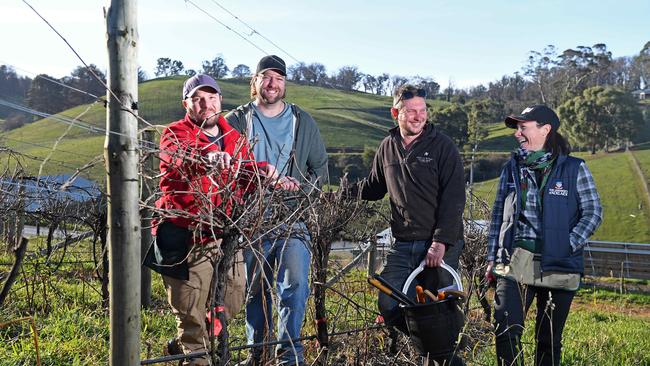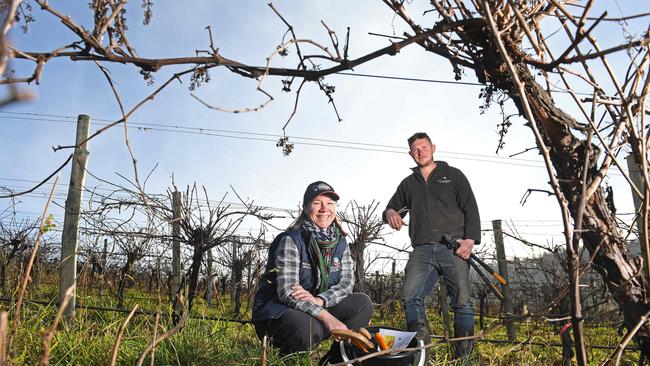University of Adelaide research supports bushfire recovery in Adelaide Hills vineyards
Bushfire-ravaged vines in the Adelaide Hills are being analysed and new methods are being used to restore the living back to health, in a project bringing growers and researchers together.

Bushfire Support
Don't miss out on the headlines from Bushfire Support. Followed categories will be added to My News.
- Adelaide Hills winemakers’ special blend for bushfire appeal
- How to get the most out of your Advertiser subscription
Wine grape growers in the Adelaide Hills are working with University of Adelaide researchers to find the best ways to recover from bushfire.
Research fellow Dr Roberta De Bei is experimenting with different pruning techniques and new ways to assess the damage over large areas.
“We hope to be able to give growers better information on how to recover, because at the moment all they are told is you just need to rework your vineyards, chop off what is damaged and hope for the best for those shoots that will come up, otherwise you need to replant,” she said.
“So hopefully we will get the growers back to fruit production in a shorter amount of time and also find better ways to assess the damage in the first place, through satellite and drone imaging.”
She said it was “heartbreaking” to see the vineyards at their worst, straight after the fires, but then the grass started growing and vines started shooting, greening the landscape.
Lenswood Rise vineyard manager Tim Bartsch managed to save some of his vineyard at Lobethal, but seven hectares was “cooked”.
“The fire burnt through really quickly, melted all of the irrigation infrastructure that was above ground and burnt about half of the posts,” he said.
“The vines themselves didn’t actually burn but the radiant heat has killed maybe 30 per cent above ground and they’re still active underground.”

In the aftermath he encountered the scientist who supervised his honours year at university (2006), Associate Professor Cassandra Collins, who was giving talks and organising meetings in the affected wine regions. Mr Bartsch offered access to his property for research purposes and now there are several growers involved in the project: “Building resilient vineyards: bushfire impact assessment and recovery management of vineyards in the Adelaide Hills”.
The research team used satellites and drones to study the damage using remote sensing as well as the ground-based application VitiCanopy.VitiCanopy They aim to determine the most accurate and cost-effective way to assess damage over a large area.
Another sophisticated technique involves collecting winter shoots, which already have buds on them and carry all the fruit they will develop this season, for analysis under the microscope.
This has helped Mr Bartsch determine which sections of the vineyard that were badly burnt have low potential yield for the next season, “information that has been of direct use right now and has changed my current management”.

